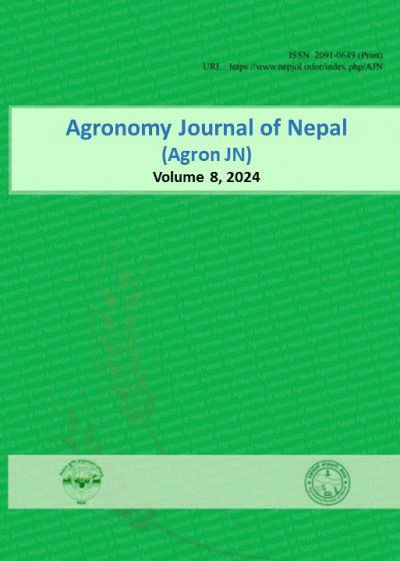Improved Agronomic Practices on Enhancement of Quality Forage Production for Livestock Farming
DOI:
https://doi.org/10.3126/ajn.v8i1.70917Keywords:
Variety, seed rate, sowing, irrigation, cutting timeAbstract
The lack of nutrient-rich fodder and forage is one of the problems of livestock farming. Adequate tillage operations, timely and suitable water management, weed management, insect pests and disease management, fertilizer management, seeding at the proper time and seed rate, timely harvesting, and other agronomic techniques can all help to increase the nutritional content and yield of fodder and forage crops. A number of research and review papers have been systematically reviewed in this study. The use of tillage practices such as primary, secondary, conventional, and deep tillage enhances dry matter and yield of green fodder as compared to zero tillage. The organic matter (OM) content and dry matter (DM) of fodder crops are increased by regular and appropriate irrigation. The DMD (dry matter digestibility) and CP (crude protein) contents of early harvested forages are higher than those of late harvested forages. The application of nitrogen promotes crop development and growth, increasing the production of green fodder and improving its quality. Intercropping is essential for increasing the yield of fodder crops. Compared to sole cropping of maize and cowpea, the yield is found higher in intercropping of maize + cowpea. The production and quality of fodder are decreased by late seeding. The management of insect pests and diseases enhances the production and quality of fodder and forage. Thus, we draw the conclusion that fodder and forage crops production and their quality parameters are greatly influenced by agronomic practices.
Downloads
Downloads
Published
How to Cite
Issue
Section
License
Copyright (c) 2024 Agronomy Society of Nepal (ASoN)

This work is licensed under a Creative Commons Attribution-NonCommercial 4.0 International License.
ASON permits for free use, distribution and reproduction in any medium if the original work is properly cited and not used for commercial purposes.




